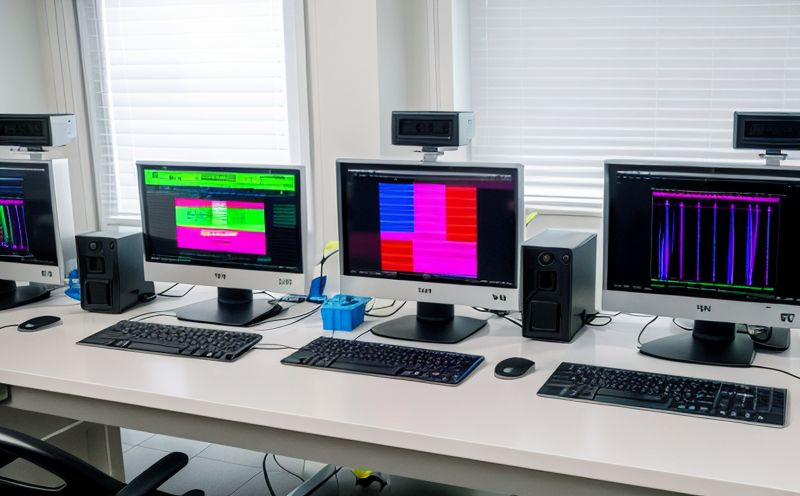ISO 10705-2 Somatic Coliphage Detection in Water
The ISO 10705-2 standard provides a robust method for detecting somatic coliphages as indicators of water quality. This test is particularly useful for assessing the presence and potential sources of human waste contamination in surface waters, wastewater effluents, and reclaimed water systems.
Coliphages are viruses that infect coliform bacteria such as Escherichia coli, which are often used as indicators of fecal pollution. The detection of somatic coliphages in water samples is an important step towards ensuring the safety of drinking water and recreational waters. This method helps in identifying potential public health risks by detecting the presence of viruses that could be indicative of human sewage contamination.
The testing process involves the following steps:
- Sampling: Collecting representative water samples from various sources such as rivers, lakes, and wastewater treatment plants.
- Sample preparation: Diluting the collected samples to ensure that the coliphages are present in concentrations suitable for detection.
- Culture formation: Incubating the diluted samples under conditions optimal for coliphage growth. This step is crucial as it allows the viruses to multiply and become detectable.
- Enumeration of coliphages: Using plaque assays or similar methods to count the number of plaques formed by the coliphages in the culture medium.
The results are reported based on the number of somatic coliphage units per liter. This standardized approach ensures that all laboratories using this method produce consistent and comparable results, which is essential for regulatory compliance and public health protection.
Compliance with ISO 10705-2 is mandatory in many regions where stringent water quality standards are required. By adhering to this standard, organizations can demonstrate their commitment to maintaining high-quality drinking water and recreational waters. This not only helps in meeting regulatory requirements but also enhances the reputation of the organization as a leader in environmental stewardship.
In summary, the ISO 10705-2 somatic coliphage detection method is an essential tool for monitoring and ensuring the safety of water sources. It plays a critical role in identifying potential health risks associated with human sewage contamination and helps in maintaining regulatory compliance.
Why It Matters
The importance of detecting somatic coliphages cannot be overstated, especially when it comes to water quality monitoring. The presence of these viruses can indicate the presence of human sewage contamination in water sources, which poses significant health risks to the public.
Waterborne diseases caused by pathogenic viruses are a major concern globally. By detecting somatic coliphages early on, authorities and organizations can take proactive measures to prevent the spread of these diseases. This testing method helps in identifying potential contamination hotspots and implementing remediation strategies promptly.
The ISO 10705-2 standard ensures that all laboratories conducting this test follow a consistent procedure. This consistency is crucial for producing reliable results, which can be used to inform policy decisions and public health measures. In regions where water quality standards are stringent, compliance with this standard is often mandatory.
Moreover, the detection of somatic coliphages can guide improvements in wastewater treatment processes. By identifying specific sources of contamination, organizations can focus their efforts on addressing these issues more effectively. This not only enhances water quality but also contributes to sustainable environmental practices.
In conclusion, the ISO 10705-2 method is vital for maintaining public health and ensuring regulatory compliance in various sectors, including municipal water supply, wastewater treatment, and recreational water management.
Why Choose This Test
The ISO 10705-2 somatic coliphage detection test is a preferred choice for several reasons:
- Regulatory Compliance: Many regions require compliance with this standard to ensure the safety of water sources.
- Precision and Consistency: The standardized procedure ensures that all laboratories produce consistent and reliable results.
- Health Protection: By detecting somatic coliphages early on, organizations can prevent the spread of waterborne diseases.
- Sustainable Practices: Identifying specific sources of contamination helps in implementing targeted remediation strategies that enhance environmental sustainability.
- Reputation Enhancement: Adherence to this standard demonstrates a commitment to maintaining high-quality drinking water and recreational waters, thereby enhancing the reputation of the organization.
In addition to these benefits, the ISO 10705-2 method is cost-effective in the long run as it helps prevent costly health incidents and regulatory penalties. By choosing this test, organizations can ensure that they are meeting their environmental and public health obligations effectively.
Customer Impact and Satisfaction
The ISO 10705-2 somatic coliphage detection test has a significant impact on customers by providing them with reliable data that can be used to make informed decisions. This method ensures that water sources are safe for consumption and recreational activities, thereby protecting public health.
By detecting somatic coliphages early on, organizations can prevent the spread of waterborne diseases, which can have severe consequences for public health. The results of this test help in identifying potential contamination hotspots and implementing remediation strategies promptly. This proactive approach not only enhances water quality but also contributes to sustainable environmental practices.
Customers who rely on this testing method are assured that the organizations providing them with water services are committed to maintaining high-quality standards. This commitment translates into customer satisfaction, as customers can trust the safety and reliability of the water they consume or use for recreational purposes.
In conclusion, the ISO 10705-2 somatic coliphage detection test is a valuable tool that has a positive impact on both public health and customer satisfaction. By choosing this method, organizations can ensure that they are meeting their environmental and public health obligations effectively.





